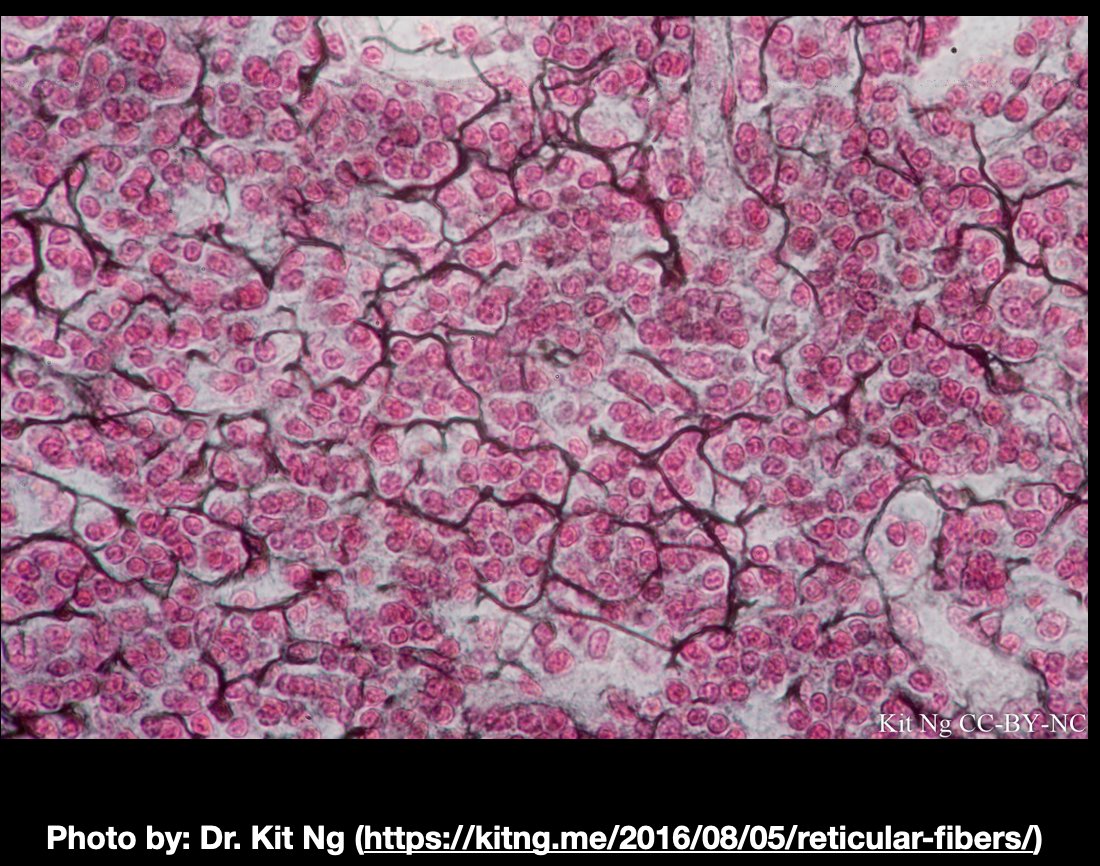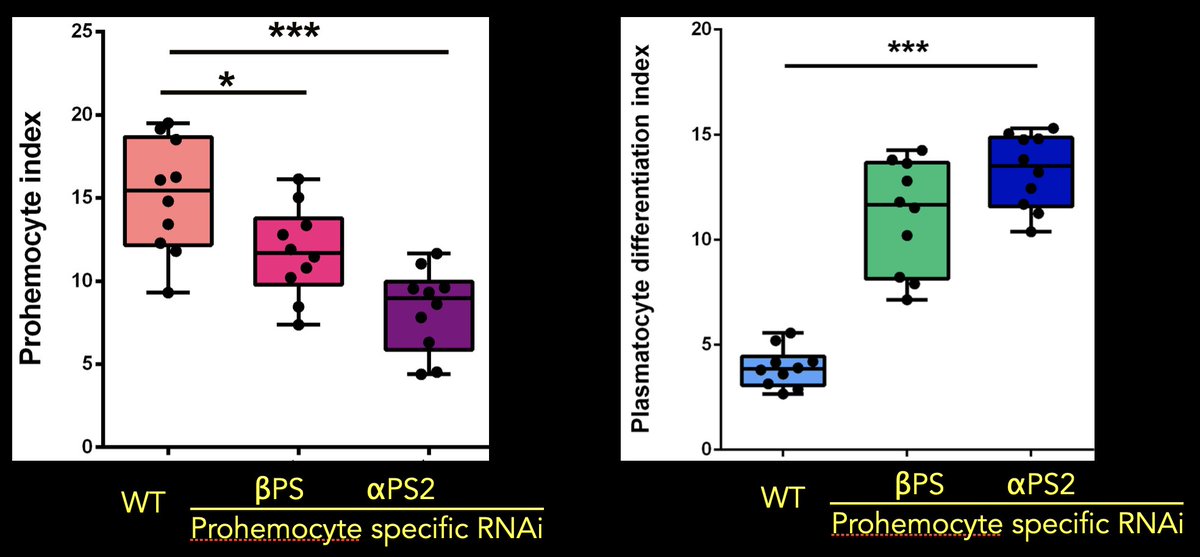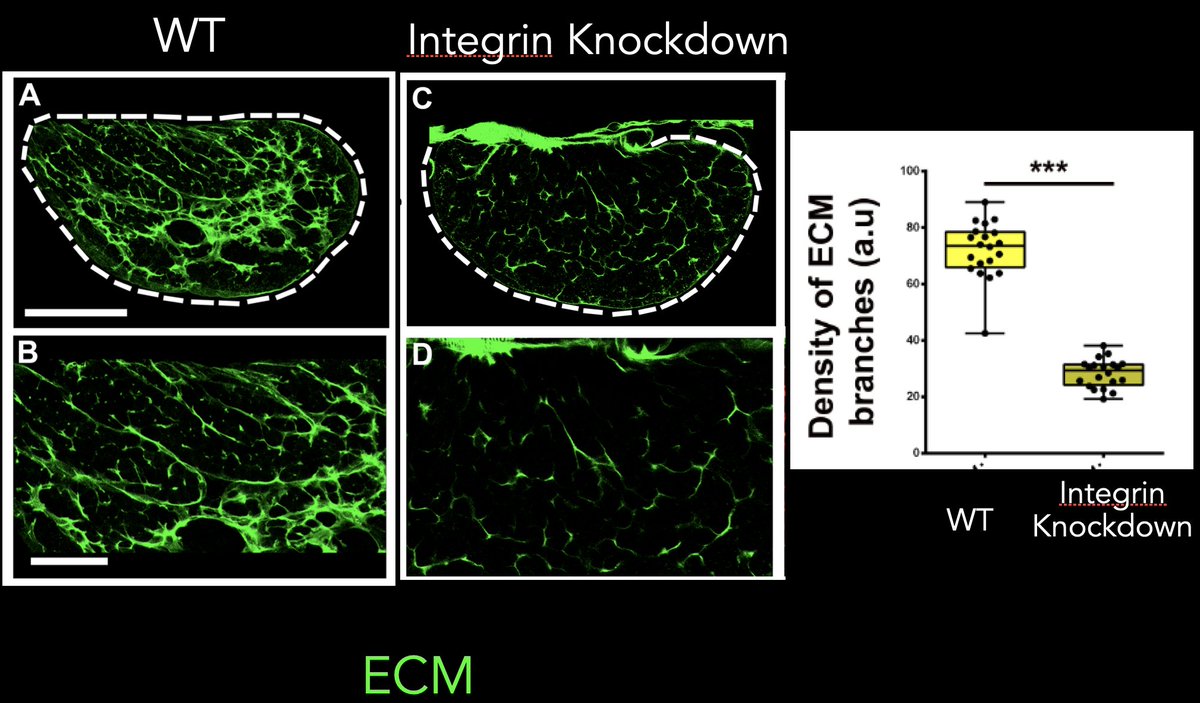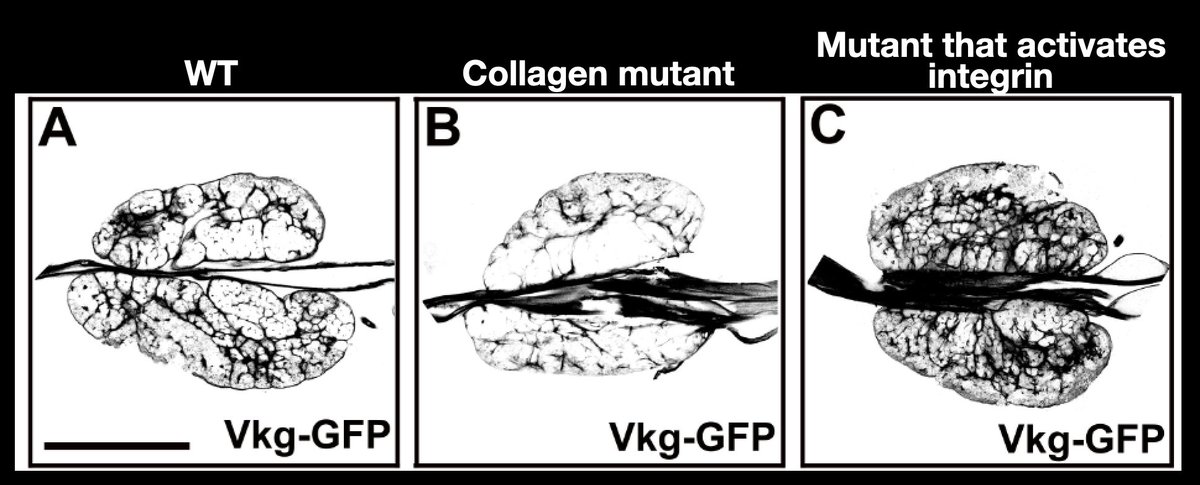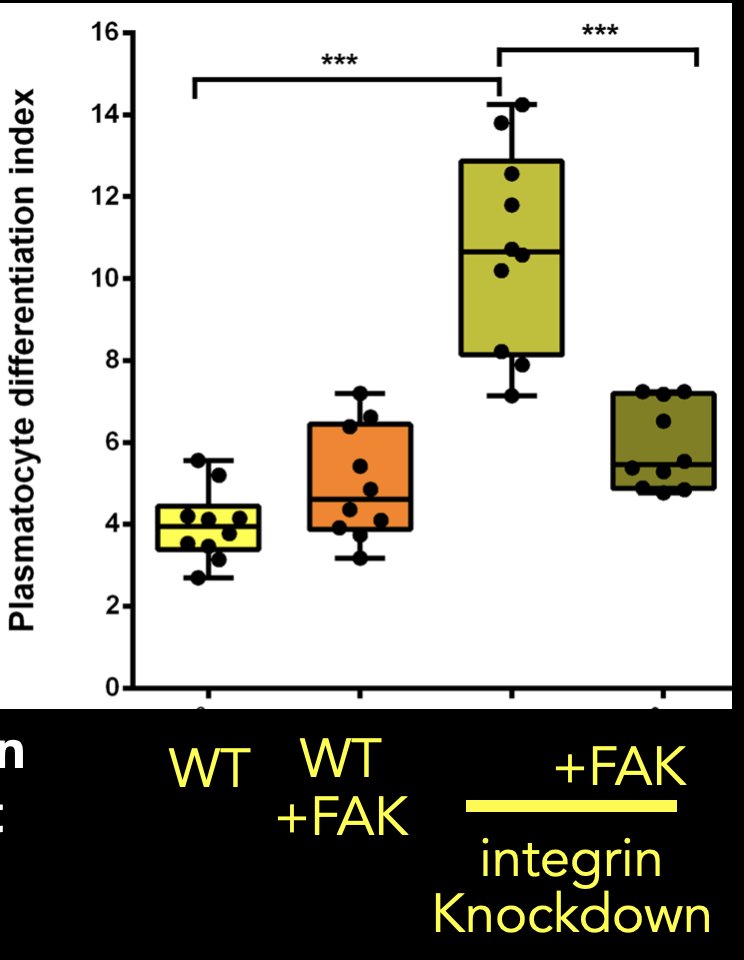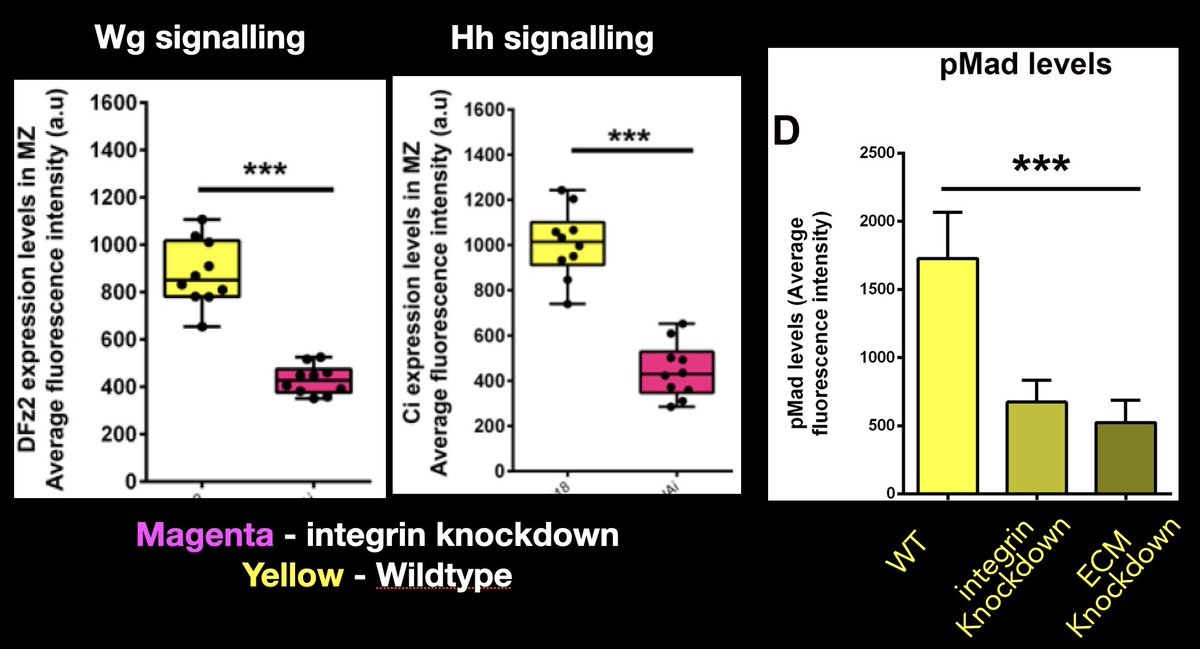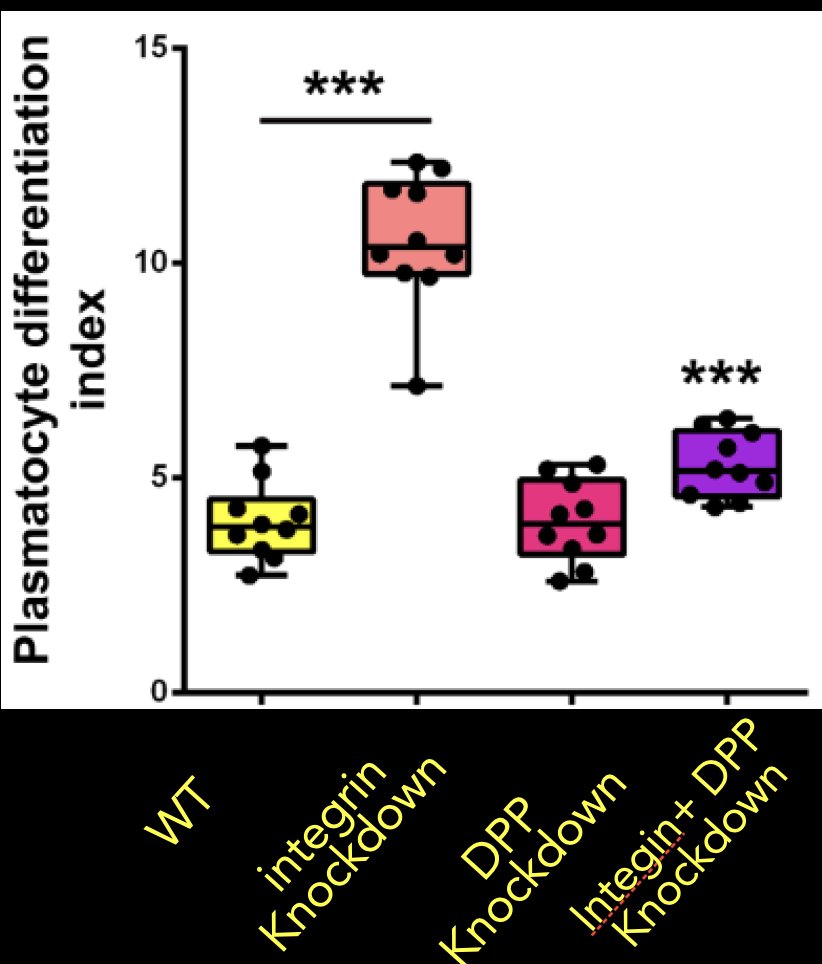1. Usually the ECM is thought of as a structural element, a scaffold to hold cells in place or provide tracks for cells to move along. Our newest paper, now online @CurrentBiology, explores a different role for the ECM: an organiser of cell signalling https://www.cell.com/current-biology/fulltext/S0960-9822(20)30843-5
2. Our new paper, the work of @RohanKhadilkarr (who recently left our lab to set up his own lab), shows that modulating the organization & density of the ECM in the fly hematopoietic organ, the lymph gland, provides a mechanism to control the behaviour of blood progenitor cells.
3. Often for us scientists, our teaching is based on our research, but in this project it went the other way, it was partly inspired by teaching histology. One of my favorite things to show students are silver stains of reticular fibers in lymphoid tissue. https://www.flickr.com/photos/146824358@N03/40885194425/in/album-72157666241437517/
4. Reticular fibers are found in myeloid tissues in vertebrates & are a beautiful & somewhat mysterious type of ECM. In textbooks they are usually described as being composed of Collagen III but this paper finds that they contain many ECM proteins. https://link.springer.com/article/10.1007/BF00214379
5. Two terrific previous papers had described an ECM in the fly hematopoietic organ, the lymph gland. This ECM looks a lot like reticular fibers. We wanted to understand the role of integrins in relation to this specialised ECM. https://pubmed.ncbi.nlm.nih.gov/23510717/ https://www.sciencedirect.com/science/article/pii/S0012160613001735
6. When we reduced the amount of collagen in the lymph gland or reduced the level of integrin in the blood progenitors we saw the same phenotype, loss of progenitors & increased blood cell differentiation. Shown below are data from RNAi mediated knockdown of beta & alpha integrin
7. An obvious hypothesis for what integrins & ECM are doing in this context is to serve an anchor to keep blood progenitors in place, if progenitors detached from the ECM it could drive differentiation. We tested this directly by live imaging WT & integrin deficient lymph glands.
8. We developed methodology for long term imaging of intact lymph glands in culture. Surprisingly we found that progenitors were rooted in place both in WT & integrin deficient lymph glands. We did however notice that loss of integrins resulted in badly disrupted ECM architecture
9. The level of activity of integrins directly correlated with how dense & complex the ECM was (in figure below Vkg-GFP is fly collagen). And how dense & complex the ECM was seemed to directly regulate whether progenitors would differentiate into blood cells. Why was this?
10. We find evidence that integrins regulated blood progenitor behaviour in two ways. The first & more obvious was is through FAK-mediated integrin signalling. If we turned on FAK signalling in progenitors we could partially rescue the integrin loss of function phenotype.
11. The 2nd way integrins regulate blood progenitor behaviour was hinted at by the papers from Grigorian & Dragojlovic-Munther, which found that Hh & Heartless signalling, respectively, were disrupted when the ECM was disrupted. We similarly found a link to Bmp signalling.
13. We could partially rescue loss of integrin in the lymph gland by over expressing Dpp.
SO, cell signalling in the lymph gland is very complex but why were SO many different cell signalling pathways altered when the density & architecture of the ECM was modulated by integrins?
SO, cell signalling in the lymph gland is very complex but why were SO many different cell signalling pathways altered when the density & architecture of the ECM was modulated by integrins?
14. This short movie summarises our model. A stem cell niche (orange) produces a signal (green dots). The movie then shows how ECM (purple) alters the movement & distribution of signals through the extracellular space. Finally, it shows what happens if ECM is denser or looser.
15. This model is based on some previous work showing how the ECM modulates the movement of signals through the extracellular space. In particular amazing work from @TheAsheLab. Also, work from @ActonLab really inspired us to try live imaging of fly lymph glands. Thanks to both!

 Read on Twitter
Read on Twitter